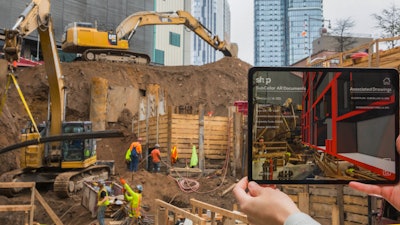
Heavy equipment manufacturers have for some time now been constantly looking for ways to cut costs out of the production cycle and increase efficiencies. While this was a priority before COVID-19, it has become even more important today.
In response, virtually-focused production technologies are now being reviewed and planned to help with equipment production.
Widely known as augmented reality (AR), this technology is partnered with its sister technology virtual reality (VR).
AR is a promising technology since it can improve the way equipment manufacturers operate as well as how the business customer, and even consumers, interact with products and services. For many, this is still a concept and not yet a reality. However, a recent survey shows that businesses are beginning to rapidly enter the planning and implementing stages.
 Renault Trucks is one of many OEMs which has incorporated the use of augmented reality into its manufacturing operations.Renault Trucks
Renault Trucks is one of many OEMs which has incorporated the use of augmented reality into its manufacturing operations.Renault Trucks
A rise in manufacturers going virtual
Fifty-six percent of business leaders polled1 said they have implemented some form of AR/VR technology into their organization over the last 12 months, and another 35% said they are considering doing so. More than a quarter (27%) said they have fully deployed an AR/VR solution and are looking to scale further.
A business can transform how they capture, manage, and communicate information through AR technology. This transformation can be seen both within a business and its prospects and customers. Significantly, it can improve the way a business conducts collaborative engineering design reviews, sales and marketing, field service, skills transfer and manufacturing.
Large tech companies like Google, Samsung, HTC, and Microsoft are predicted to dominate the AR market which is expected to have a value of $61 billion USD by 20232.
So, what needs to be known about AR? To begin, a manufacturer must know the earliest advantages of AR come from virtual supplemental productivity on the manufacturing floor; virtual training modules; virtual customer visits; and virtual design and engineering. Businesses should work with a technology provider to get notable and early returns out of AR/VR through mapping of their operational needs to one of these four areas.
A breakdown of where companies are leveraging AR/VR1:
- 60% - Virtual Supplemental Labor on Production Lines
- 53% - Virtual Customer Service Visits
- 53% - Virtual Design & Engineering
- 26% - Employee Training Programs
A heavy equipment manufacturer that needs to keep production cycles flowing yet keeps losing plant workers who are sick from coronavirus is a perfect example of how a business can utilize AR/VR. The manufacturer could use AR/VR technology to assist the build out of trucks and loaders on the production line, as well as virtual tools to help design the new trucks from remote locations. Businesses aren’t the only ones who can make use of AR technology. Equipment customers could employ this technology to see a series of different product and vehicle looks overlaid on their smartphone device when building their ideal truck online.
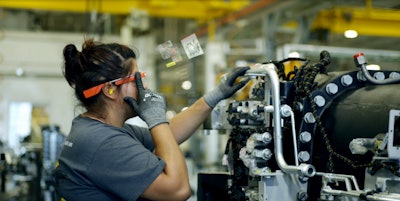 AGCO has been utilizing assisted reality technology at its manufacturing facility to help improve processes.AGCO Corp.
AGCO has been utilizing assisted reality technology at its manufacturing facility to help improve processes.AGCO Corp.
The right way to launch AR/VR technologies for your business
In order to have enterprise-grade high-quality AR/VR platforms, performance and scale is required. This is tough to achieve since existing systems, such as MS HoloLens, are severely limited in both aspects. Currently, most enterprises have a rich repository of existing complex 3D CAD/CAM models created over the years. These 3D models may vary in their complexity (such as poly count, hierarchy, details, etc.), making it difficult to run on standalone devices, restricted by device limitations.
It is pertinent for businesses to understand that the problem of scalability will continue as richer and larger virtual environments are created. Each of the different hardware platforms will cause the cycle to repeat, creating difficulty for any enterprise to move from experiments and pilots to full-scale deployable solutions. Overall, this issue will stunt the speed of innovation and effectiveness.
Device limitations continue to effect existing AR/VR systems by restricting their ability to generate and work within most cloud environments, which is essential to co-locate and precisely fuse the virtual objects on top of physical objects in the real world with complex surfaces, and varied lighting and environment.
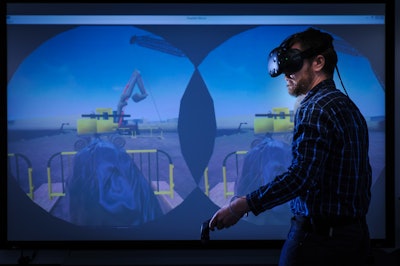 Real-world elements can be incorporated into AR/VR systems to aid with the development of heavy equipment.RUB, Schirdewahn
Real-world elements can be incorporated into AR/VR systems to aid with the development of heavy equipment.RUB, Schirdewahn
Though this is a significant challenge, manufacturers are overcoming it by partnering with AR/VR platform providers that leverage distributed cloud architecture and 3D vision-based AI. These cloud platforms provide the desired performance and scalability to drive innovation in the industry at speed and scale.
The next wave of technology innovation is here and will fundamentally change the way businesses operate today. AR/VR technology will help in the new wave of technology by merging the digital and physical world to create a better, smarter, and more efficient way of operating. Organizations that take the initiative, leverage these technologies and partner with the right technology provider to help scale appropriately without having to stunt technological growth will take a leadership role.
This article was contributed by Grid Raster Inc.
About the Author
Dijam Panigrahi is co-founder and COO of Grid Raster Inc., a leading provider of cloud-based AR/VR platforms that power compelling high-quality AR/VR experiences on mobile devices for enterprises.
Footnotes




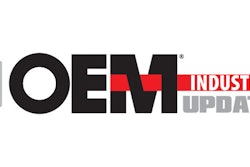
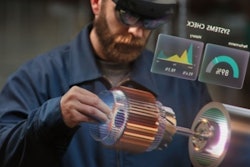
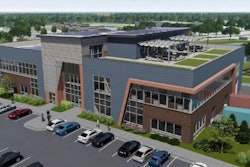
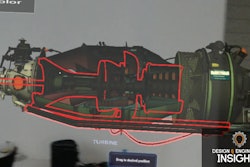








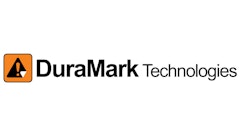
![Hcm Ax Landcros Press Release[32] jpg](https://img.oemoffhighway.com/mindful/acbm/workspaces/default/uploads/2025/11/hcmaxlandcros-press-release32jpg.mAEgsolr89.jpg?ar=16%3A9&auto=format%2Ccompress&fit=crop&h=135&q=70&w=240)